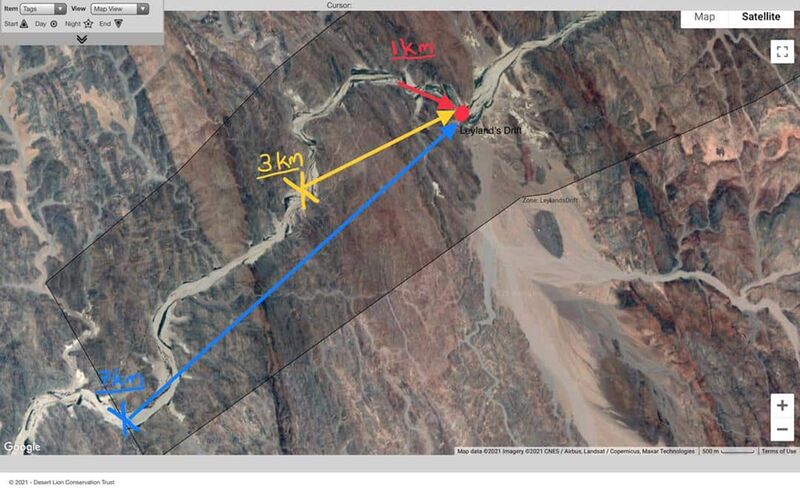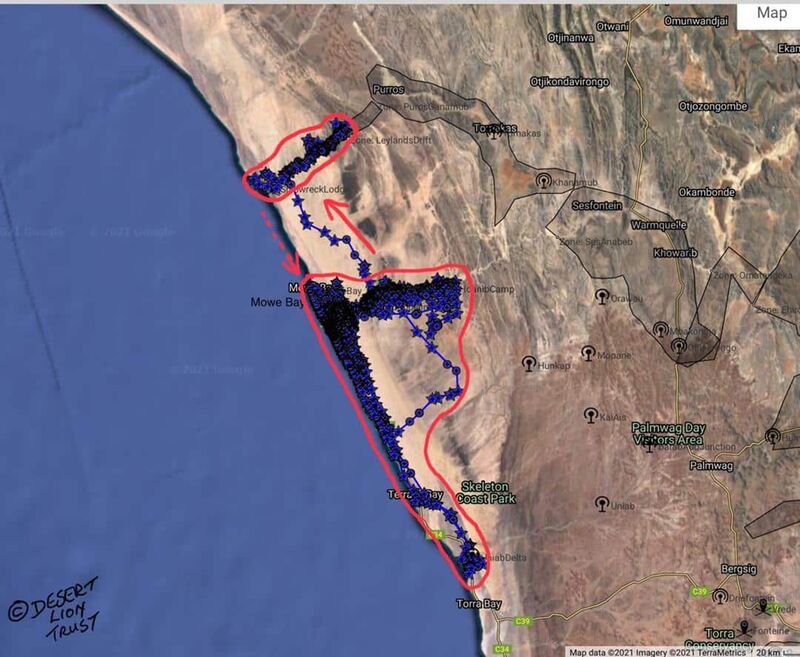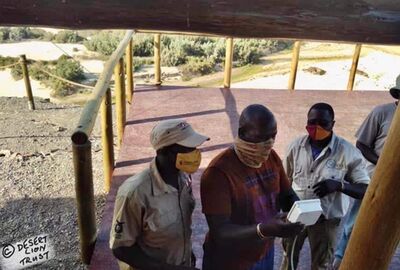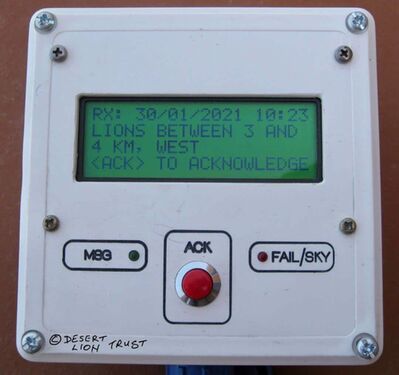Hoaruseb / Purros Solution
Sunday 31 January 2021
Vehicle repairs
Spare parts were ordered from Swakopmund and with the assistance of Shipwreck Lodge, the rear suspension of the research vehicle was repaired.
Repairs to the research vehicle

Lion movements
After the two Orphan lionesses were displaced from Leyland’s Drift on 25 Jan 2021 (see above), they remained in the mountainous areas to the west for the following few days. They moved further westwards into the dune area and on 29 Jan 2021 they killed another gemsbok.
Two lionesses on the southern bank of the Hoaruseb river
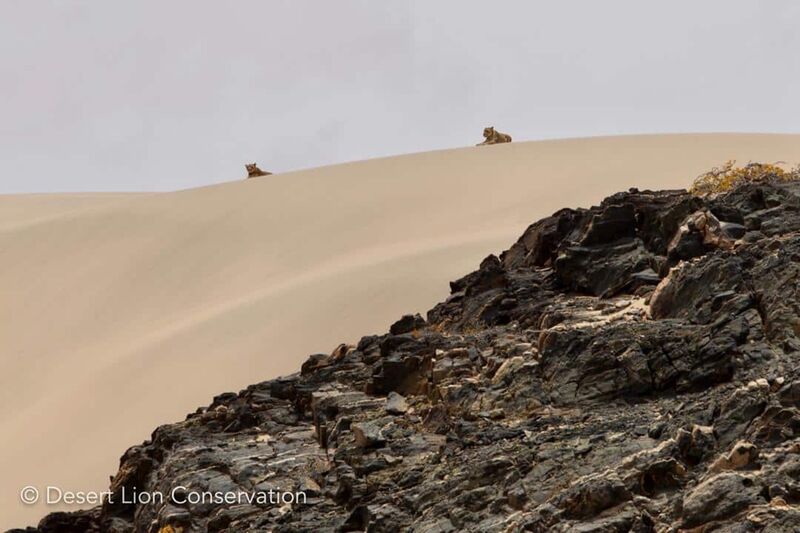
Lioness moving along mountain ridges west of Leyland’s Drift
Interaction between lioness and brown hyaena
Since their birth early in 2016 the Orphan lionesses have lived along the lower Hoanib river including the Floodplain and coastal habitat. In mid 2020 they expanded their home range by moving southwards and discovering the Uniab Delta (see map). They began exploring the area north of the Hoanib river for the first time on 3 Jan 2021 and discovered the productive lower Hoaruseb river. This was a significant development in terms of the long-term conservation of the species and its value to the local tourism industry. Conflict between the lions and livestock, however, brings about a range of problems that need immediate attention and active management.Movement patterns of the Orphan lionesses since 2016
NW Human-lion Conflict Management Plan
During collaborative discussions with the Ministry of Environment, Forestry & Tourism, Purros Conservancy, Lion Rapid-response Team & IRDNC, a plan was devised to prevent future conflict by following the policy guidelines laid out by the NW Human-lion Conflict Management Plan.
A Remote Alert Unit has been installed at Leylands Drift in order to assist the Rapid-response Team based at Leylands Drift. The purpose of the unit is to give the team an early warning that the lions are entering the potential conflict area. The satellite collars & Early-warning collars on the lions transmit their position to the central server, which checks the position with respect to a pre-defined geofenced area. Should the geofence be violated, a message is sent via satellite to the Remote Alert Unit, thus giving the Response Team timeous information and allowing the team to respond and deploy scare tactics. The message indicates the distance of the lions from Leylands Drift, as well as bearing. The geofence is defined as such that the first message will be sent when the lions cross the Skeleton Coast Park border towards Puros - a distance of approximately 7km from Leylands Drift. Thereafter messages will be sent at least every 4 hrs, notifying the team that the lions are still in the conflict area. Should the lions cross the 3km and 1km distance markers, messages will be sent immediately to the unit as well as to selected recipients via SMS.
Mounting and testing of the Remote Alert Unit at Leyland’s Drift
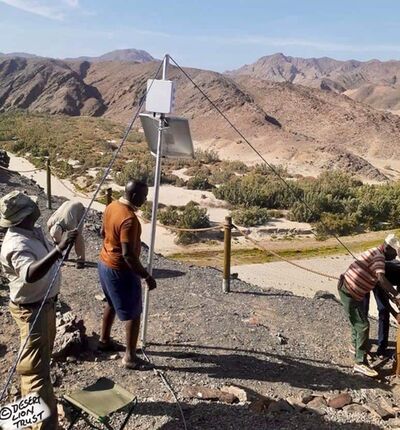
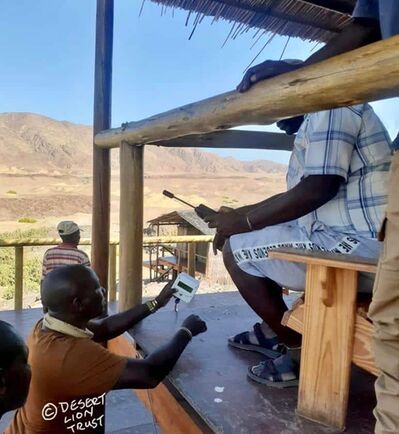
Schematic layout of geofencing used to generate automated alerts of lion movements
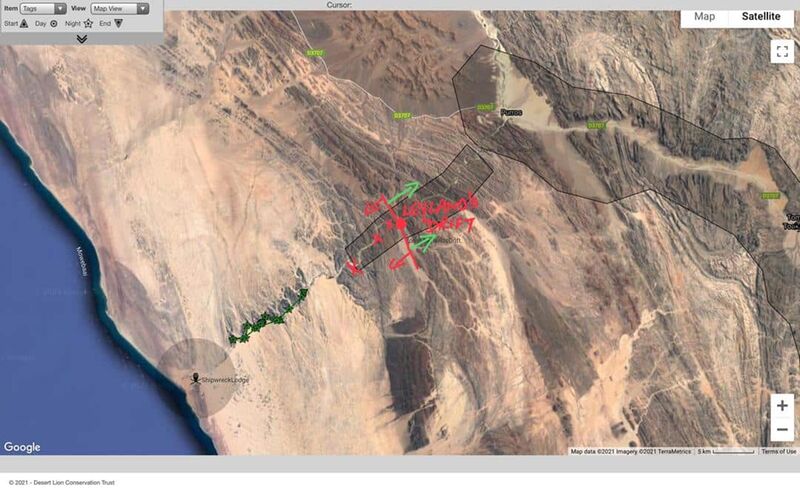
Layout of geofencing alerts sent to the Remote Alert Unit at Leyland’s Drift
